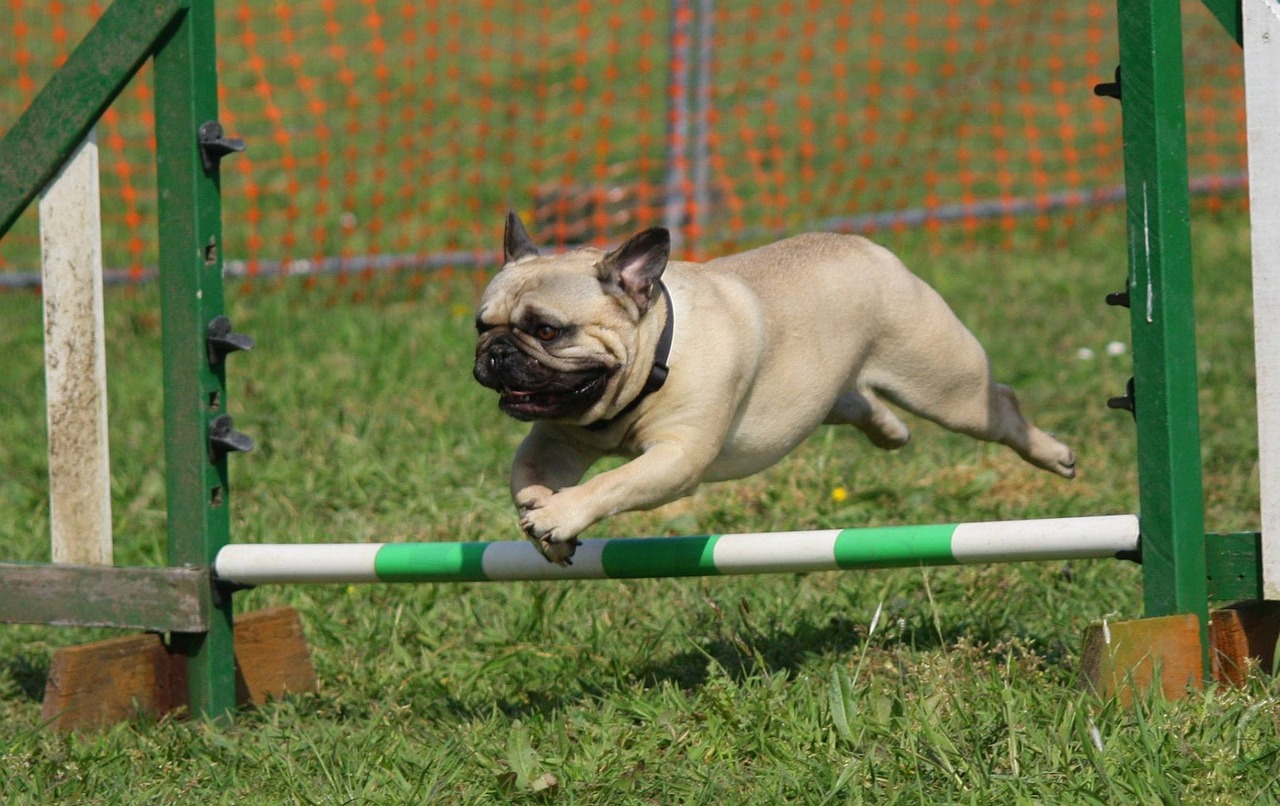The Benefits of Professional Training for Pets
Have you ever wondered why some pets seem to have impeccable manners while others are a whirlwind of chaos? The difference often lies in professional training. This article explores the numerous advantages of professional training for pets, including improved behavior, enhanced communication, and the strengthening of the bond between pets and their owners. Investing time and resources into training not only transforms your pet into a well-behaved companion but also enriches your relationship with them. So, let’s dive into the remarkable benefits that professional training can offer!
Imagine coming home to a pet that greets you with calmness instead of jumping all over you. Professional training helps pets develop good manners and reduces undesirable behaviors, leading to a more harmonious household. Well-trained pets are often more enjoyable companions and easier to manage in various situations. For instance, a dog that knows how to sit and stay can be a joy at the park or during family gatherings. Without training, pets may engage in behaviors that can be frustrating, such as excessive barking or destructive chewing. By addressing these issues through training, you create a more peaceful environment for both you and your furry friend.
Have you ever felt like you and your pet are speaking different languages? Training fosters better communication between pets and their owners. Understanding commands and cues allows for a clearer exchange of information, enhancing the relationship and ensuring that pets respond appropriately to their owners. Think of it as building a bridge of understanding; the more you train, the stronger that bridge becomes. When pets learn to recognize verbal commands, body language, and even hand signals, it creates a seamless interaction that can lead to fewer misunderstandings and a more fulfilling relationship.
Utilizing positive reinforcement during training encourages pets to repeat desired behaviors. This method builds trust and strengthens the bond between pets and owners, making training sessions more effective and enjoyable. Instead of punishing undesirable behaviors, rewarding good behavior with treats, praise, or playtime creates a positive association. Imagine your pet’s face lighting up when they realize they’ve done something right! This approach not only makes training fun but also fosters a loving environment where pets feel secure and valued.
Consistency in using commands is crucial for effective training. When owners use the same words and gestures, pets learn faster and are less likely to become confused during training sessions. For example, if one family member says "sit" while another says "down," it can create confusion for the pet. By establishing a consistent vocabulary, you set your pet up for success. This consistency helps them understand what is expected, making the training process smoother and more enjoyable for everyone involved.
Professional training can also boost a pet's confidence, especially in social situations. A well-trained pet is more likely to feel secure and comfortable around other animals and people, reducing anxiety and fear. Just like people, pets thrive when they know what to expect. Training helps them navigate the world with assurance, whether it’s meeting new friends at the dog park or handling unexpected noises. A confident pet is not only happier but also less likely to exhibit behavioral issues stemming from fear or insecurity.
Training classes provide essential socialization opportunities for pets. Interacting with other animals and people in a controlled environment helps pets develop appropriate social skills and reduces the likelihood of behavioral issues. Think of it as a puppy playdate combined with school! These classes allow pets to learn how to behave around others, which is invaluable for their development. The more socialized a pet is, the better they can handle various situations, from family gatherings to trips to the vet.
Professional training sessions create opportunities for pets and owners to work together, fostering a deeper bond. This shared experience enhances trust and understanding, making the pet-owner relationship more fulfilling. Just like any relationship, the more time and effort you invest, the stronger it becomes. Training isn’t just about teaching commands; it’s about building a partnership where both parties work towards common goals.
Working towards common training goals encourages teamwork and collaboration between pets and their owners. Achieving these goals together reinforces the bond and creates a sense of accomplishment for both parties. Whether it’s mastering a new trick or successfully navigating a challenging environment, every small victory brings you closer together. It’s like climbing a mountain together; the journey strengthens your connection and creates lasting memories.
Training sessions provide valuable quality time for pets and their owners. Engaging in these activities strengthens emotional connections and allows owners to better understand their pets' needs and personalities. This time spent together is not just about commands and tricks; it’s an opportunity to connect on a deeper level. You’ll discover quirks and preferences you might not have noticed before, making your relationship even richer.
- How long does professional training take? Training duration varies based on the pet's age, breed, and the specific behaviors being addressed. Generally, a few weeks of consistent training can yield significant improvements.
- Can I train my pet at home? Yes! While professional training is beneficial, you can reinforce lessons at home. Consistency and patience are key.
- What if my pet doesn’t respond to training? Every pet learns at their own pace. If your pet is struggling, consider seeking the help of a professional trainer who can offer personalized strategies.

Improved Behavior
This article explores the numerous advantages of professional training for pets, including improved behavior, enhanced communication, and the strengthening of the bond between pets and their owners.
Professional training is like a magic wand for your furry friends, transforming their behavior and creating a peaceful environment at home. Imagine walking through your front door to find your pet calmly waiting for you instead of jumping all over the place. With the right training, pets can learn good manners that make them more enjoyable companions. It’s all about turning those pesky habits into delightful traits!
One of the primary benefits of professional training is the reduction of undesirable behaviors. Think about it: a well-trained pet is not only easier to manage but also a joy to have around. No more chasing after them when they decide to bolt out the door or dealing with incessant barking at the mailman. Instead, you can enjoy a harmonious household where everyone knows the rules. This is especially beneficial in multi-pet households, where the dynamics can get complicated without proper training.
But how does this training work? It’s all about teaching your pet what is expected of them. With professional guidance, pets can learn commands that help them understand what you want. For example, a simple command like “sit” can prevent a lot of chaos, especially when guests arrive. Just picture your pet sitting calmly by your side, waiting for their turn to greet visitors. It’s not just about obedience; it’s about creating a peaceful coexistence.
Moreover, professional trainers often use positive reinforcement techniques to encourage good behavior. This means rewarding your pet for doing the right thing, which not only motivates them but also builds a strong bond of trust between you and your furry friend. Imagine your pet's tail wagging with excitement every time they get a treat for sitting patiently. It’s a win-win situation!
To put it simply, the impact of professional training on your pet's behavior can be profound. A well-trained pet is less likely to exhibit aggression or anxiety, making them more adaptable to different situations. For instance, if you take your dog to a park, a trained pet will be less likely to engage in unwanted behaviors like jumping on strangers or barking excessively. They’ll be able to enjoy their time while you relax knowing they’re well-behaved.
In addition to improving behavior, training can also help pet owners understand their pets better. When you know why your pet behaves a certain way, you can address any issues more effectively. Professional trainers can provide insights and strategies tailored to your pet’s unique personality and needs. This understanding is crucial in preventing bad behavior from escalating.
In conclusion, investing in professional training for your pet not only leads to improved behavior but also contributes to a happier home. With the right guidance, your pet can learn to be a well-mannered companion, making life easier and more enjoyable for everyone involved.
- How long does it take to train a pet? The duration varies based on the pet's age, breed, and previous training experience, but most pets can show significant improvement within a few weeks.
- What types of training are available? There are various types of training, including obedience training, agility training, and behavioral modification.
- Can I train my pet at home? While some training can be done at home, professional trainers provide expertise and structure that can be beneficial for both the pet and the owner.

Enhanced Communication
When it comes to our furry friends, communication is key. Imagine trying to have a conversation with someone who speaks a completely different language. Frustrating, right? Well, that's often how our pets feel when we don't take the time to train them properly. Professional training acts as a bridge, allowing for clearer exchanges between pets and their owners. It’s not just about teaching commands; it’s about fostering a deeper understanding of each other.
One of the most significant benefits of professional training is that it helps pets understand what we want from them. By consistently using specific commands and cues, we create a language that our pets can learn. For example, when you say "sit," and your dog responds, it’s not just a trick; it’s a conversation. This understanding reduces confusion and enhances the overall relationship. Imagine a world where your pet responds to your commands effectively, making life easier and more enjoyable for both of you.
Moreover, enhanced communication leads to better behavior. When pets comprehend what is expected of them, they are less likely to engage in undesirable behaviors. For instance, if a dog knows that "stay" means to remain in place, it can prevent chaotic situations when guests arrive. This clarity not only makes training sessions smoother but also helps in daily interactions. A well-communicated command can be the difference between a calm household and a chaotic one.
In addition to verbal commands, body language plays a crucial role in communication. Professional trainers often emphasize the importance of non-verbal cues, such as hand signals and facial expressions. Pets are incredibly perceptive and can pick up on these signals, which can enhance their responsiveness. For instance, a simple hand gesture paired with a verbal command can reinforce the learning process. This multi-faceted approach to communication creates a more profound bond between pets and owners.
Furthermore, training sessions can serve as an excellent opportunity for owners to learn about their pets' personalities and preferences. By observing how pets respond to various commands or social interactions, owners can adjust their training techniques to suit their pet's unique needs. This not only fosters better communication but also helps in building trust and understanding. Just like in any relationship, knowing your partner’s quirks can lead to a more fulfilling connection.
To summarize, professional training enhances communication in several ways:
- Clarity: Reduces confusion through consistent commands.
- Behavior Improvement: Pets learn expected behaviors, leading to a harmonious environment.
- Non-Verbal Cues: Body language enhances understanding and responsiveness.
- Personalized Learning: Observing pets allows for tailored training approaches.
In conclusion, investing in professional training not only enhances communication but also enriches the overall relationship between pets and their owners. It transforms the way we interact, making every moment spent together more meaningful. So, why not take that step towards a more communicative and joyful partnership with your beloved pet?
Q1: How long does it take for a pet to learn commands?
A1: The timeline varies by pet and the complexity of the commands, but with consistent training, many pets can learn basic commands within a few weeks.
Q2: Can I train my pet at home instead of professional training?
A2: Yes, you can train your pet at home, but professional training provides structured guidance and socialization opportunities that can be beneficial.
Q3: What if my pet doesn’t respond to commands?
A3: It’s important to assess if the commands are clear and consistent. Sometimes, adjusting your training method or seeking professional help can make a big difference.
Q4: Is positive reinforcement the best method for training?
A4: Yes, positive reinforcement is widely regarded as the most effective training method. It encourages desired behaviors and strengthens the bond between pets and owners.
Positive Reinforcement Techniques
This article explores the numerous advantages of professional training for pets, including improved behavior, enhanced communication, and the strengthening of the bond between pets and their owners.
Professional training helps pets develop good manners and reduce undesirable behaviors, leading to a more harmonious household. Well-trained pets are often more enjoyable companions and easier to manage in various situations.
Training fosters better communication between pets and their owners. Understanding commands and cues allows for a clearer exchange of information, enhancing the relationship and ensuring that pets respond appropriately to their owners.
Utilizing positive reinforcement during training encourages pets to repeat desired behaviors. This method is akin to giving a child a gold star for good behavior; it builds trust and strengthens the bond between pets and owners, making training sessions more effective and enjoyable. When pets receive praise, treats, or playtime for following commands, they associate these rewards with their actions, leading to a higher likelihood of repeating them in the future.
For instance, imagine teaching your dog to sit. Instead of scolding them for not sitting, you can reward them with a treat the moment they do. This immediate feedback creates a positive learning environment, which is essential for effective training. The connection between the action and the reward becomes clearer, and your pet starts to understand that good behavior leads to positive outcomes.
Incorporating a variety of rewards can also keep training sessions exciting. Here are some examples of positive reinforcement:
- Treats: Small, tasty morsels that your pet loves can be a powerful motivator.
- Praise: Verbal affirmations like "Good boy!" or "Well done!" can boost your pet's confidence.
- Playtime: Engaging in a fun activity after a successful training session can create a positive association.
It's important to remember that timing is crucial when using positive reinforcement. The reward should be given immediately after the desired behavior occurs, so your pet can make the connection. This technique not only enhances learning but also fosters a sense of accomplishment and joy for both the pet and the owner.
Consistency in using commands is crucial for effective training. When owners use the same words and gestures, pets learn faster and are less likely to become confused during training sessions.
Professional training can boost a pet's confidence, especially in social situations. A well-trained pet is more likely to feel secure and comfortable around other animals and people, reducing anxiety and fear.
Training classes provide essential socialization opportunities for pets. Interacting with other animals and people in a controlled environment helps pets develop appropriate social skills and reduces the likelihood of behavioral issues.
Professional training sessions create opportunities for pets and owners to work together, fostering a deeper bond. This shared experience enhances trust and understanding, making the pet-owner relationship more fulfilling.
Working towards common training goals encourages teamwork and collaboration between pets and their owners. Achieving these goals together reinforces the bond and creates a sense of accomplishment for both parties.
Training sessions provide valuable quality time for pets and their owners. Engaging in these activities strengthens emotional connections and allows owners to better understand their pets' needs and personalities.
Q1: How long does it take to train a pet using positive reinforcement?
A1: The duration can vary based on the pet's age, breed, and previous training experience. However, with consistent practice, many pets can learn basic commands within a few weeks.
Q2: Can I use positive reinforcement for all types of pets?
A2: Yes! Positive reinforcement techniques can be applied to a variety of pets, including dogs, cats, and even small animals like rabbits.
Q3: What if my pet doesn't respond to rewards?
A3: If your pet seems uninterested in the rewards, try experimenting with different types of treats or rewards. Some pets may respond better to playtime or verbal praise.
Q4: Is professional training necessary for my pet?
A4: While not mandatory, professional training can significantly enhance your pet's behavior and strengthen your bond. It provides structured learning and socialization opportunities.
Consistency in Commands
When it comes to training your furry friend, consistency is key. Imagine trying to learn a new language where the words change every few minutes; it would be utterly confusing, right? Well, that’s exactly how your pet feels if you use different commands for the same action. For instance, if you say "sit" one day and "down" the next, your pet will be left scratching their head (or pawing at the ground) in confusion. Using the same words and gestures consistently helps pets learn faster and reduces the chances of miscommunication.
Establishing a set of commands that you and your family use can create a unified training approach. This means everyone in the household should agree on the commands and stick to them. For example, if you decide to use "stay" for keeping your dog in one place, make sure everyone uses "stay" and not "wait" or "hold on." This uniformity helps your pet understand what is expected of them, leading to quicker learning and better behavior.
Moreover, consistency isn’t just about the words; it’s also about the tone and body language you use. If you give the command “come” in a cheerful tone one day and a stern tone the next, your pet may not know whether to approach you with excitement or fear. Keeping your tone and body language consistent reinforces the message you’re trying to convey. It’s like giving your pet a roadmap to success; the clearer the path, the easier it is for them to follow.
To help you grasp the importance of consistency in commands, here’s a quick table summarizing some common commands and how to maintain consistency:
| Command | Consistent Usage | Example of Inconsistency |
|---|---|---|
| Sit | Always use "sit" for the action. | Using "sit down" or "take a seat." |
| Stay | Always use "stay" for keeping them in place. | Using "wait" or "hold on." |
| Come | Always use "come" to call your pet. | Using "here" or "get over here." |
In summary, being consistent with your commands not only accelerates the training process but also builds a strong foundation of trust between you and your pet. They will feel more secure knowing exactly what you expect from them, and you’ll enjoy a more harmonious relationship. So, let’s keep it simple, clear, and consistent—your pet will thank you for it!
- How long should training sessions be? Training sessions should ideally last between 5 to 15 minutes to keep your pet engaged without overwhelming them.
- What if my pet doesn’t respond to commands? Ensure you are using consistent commands and positive reinforcement. Patience and practice are crucial!
- Can I use different commands for different family members? It’s best to have a unified approach. Agree on commands as a family to avoid confusion for your pet.
Building Confidence
When it comes to our furry companions, confidence is a key ingredient in their overall happiness and well-being. Just like humans, pets can experience anxiety and fear, especially in new or challenging situations. That’s where professional training comes into play! By engaging in structured training sessions, pets can learn to navigate their world more securely. Imagine a shy dog who hesitates to greet new friends. With the right training, that same dog can transform into a confident social butterfly, eagerly wagging its tail at every new encounter!
One of the most significant benefits of professional training is the empowerment it provides to pets. Through positive reinforcement and consistent commands, pets learn that they can succeed in various situations. For instance, teaching a dog to sit, stay, or come when called not only reinforces good behavior but also instills a sense of accomplishment. This gradual accumulation of skills helps pets understand their capabilities, leading to increased self-esteem.
Moreover, training helps pets become more adaptable. When they encounter unfamiliar environments or new people, trained pets are less likely to react with fear or aggression. Instead, they can draw on their learned experiences to respond calmly and confidently. This adaptability is crucial, especially for dogs who accompany their owners to different places, whether it’s a bustling park or a quiet café. The more they learn, the more they grow!
To illustrate the impact of training on a pet's confidence, consider the following table that highlights various training methods and their benefits:
| Training Method | Benefits |
|---|---|
| Positive Reinforcement | Builds trust and encourages desired behaviors |
| Socialization | Reduces fear and enhances comfort in new situations |
| Obedience Training | Improves communication and strengthens the owner-pet bond |
In addition to formal training, pet owners can also contribute to their pet's confidence at home. Simple activities like playing fetch, exploring new environments, or even practicing commands during walks can reinforce a pet's learning and encourage them to take on new challenges. Just think about it: every time you praise your pet for doing something right, you’re not just reinforcing good behavior; you’re also boosting their confidence!
Ultimately, building confidence in pets is a journey that requires patience and consistency. As they grow more secure in their abilities, both pets and owners will experience a deeper connection. So, if you’re contemplating professional training for your furry friend, remember that it’s not just about teaching commands; it’s about nurturing a confident companion ready to take on the world!
- How long does it take for a pet to build confidence through training? It varies by individual pet, but consistent training over weeks or months can lead to significant improvements.
- Can I train my pet at home to build confidence? Absolutely! Incorporating training into daily routines can help reinforce skills and boost confidence.
- What if my pet is still anxious after training? Some pets may require additional support, such as behavioral therapy or specialized training programs.
Socialization Opportunities
When it comes to our furry companions, socialization is more than just a buzzword—it's a crucial part of their development. Professional training classes serve as a fantastic platform for pets to interact with other animals and people in a controlled environment. Imagine your pet strutting into a room full of new friends, tails wagging and noses twitching—this is the magic of socialization! It’s not just about teaching them to sit or stay; it’s about helping them navigate the complex world around them.
During these training sessions, pets encounter various stimuli that they might not experience at home. From the sounds of other dogs barking to the sight of new faces, each interaction is an opportunity for growth. Here are some key benefits of socialization through professional training:
- Reduction of Fear and Anxiety: Pets that are socialized early on are less likely to develop fears of new environments or situations. They learn that not all new experiences are threatening, which can significantly reduce anxiety.
- Improved Social Skills: Just like humans, pets need to learn how to communicate effectively with others. Training classes teach them important social cues, helping them understand how to interact with both dogs and humans properly.
- Behavioral Management: Socialization helps in curbing undesirable behaviors such as aggression or excessive barking. When pets learn to interact appropriately, they are less likely to react negatively in new situations.
Moreover, the benefits of socialization extend beyond the training sessions themselves. Regular interaction with other pets can lead to a more confident and well-adjusted animal. For instance, a dog that has participated in several training classes is likely to be more relaxed during trips to the park or visits to the vet. This kind of exposure builds a solid foundation for your pet's future interactions, making them a joy to be around.
In conclusion, enrolling your pet in professional training classes is not just about obedience; it's about nurturing a well-rounded individual. The socialization opportunities provided in these environments are invaluable, paving the way for a happier, healthier, and more sociable pet. So, why not take that step today? Your pet deserves it!
Q1: How early should I start socializing my puppy?
A1: It's best to start socializing your puppy as early as 3 to 4 weeks old. The critical socialization period is between 3 and 14 weeks, so early exposure is key!
Q2: What if my pet is shy or fearful?
A2: Professional trainers can help ease your pet into social situations. They often use gradual introductions and positive reinforcement to build confidence.
Q3: How often should I take my pet to training classes?
A3: Regular attendance is beneficial. Aim for at least once a week, but remember to practice at home too!

Strengthened Bond with Owners
This article explores the numerous advantages of professional training for pets, including improved behavior, enhanced communication, and the strengthening of the bond between pets and their owners.
Professional training helps pets develop good manners and reduce undesirable behaviors, leading to a more harmonious household. Well-trained pets are often more enjoyable companions and easier to manage in various situations.
Training fosters better communication between pets and their owners. Understanding commands and cues allows for a clearer exchange of information, enhancing the relationship and ensuring that pets respond appropriately to their owners.
Utilizing positive reinforcement during training encourages pets to repeat desired behaviors. This method builds trust and strengthens the bond between pets and owners, making training sessions more effective and enjoyable.
Consistency in using commands is crucial for effective training. When owners use the same words and gestures, pets learn faster and are less likely to become confused during training sessions.
Professional training can boost a pet's confidence, especially in social situations. A well-trained pet is more likely to feel secure and comfortable around other animals and people, reducing anxiety and fear.
Training classes provide essential socialization opportunities for pets. Interacting with other animals and people in a controlled environment helps pets develop appropriate social skills and reduces the likelihood of behavioral issues.
Professional training sessions create opportunities for pets and owners to work together, fostering a deeper bond. This shared experience enhances trust and understanding, making the pet-owner relationship more fulfilling. Imagine the joy of seeing your furry friend respond to your commands, tail wagging with excitement! It's not just about teaching them tricks; it's about building a connection that lasts a lifetime.
Working towards common training goals encourages teamwork and collaboration between pets and their owners. Achieving these goals together reinforces the bond and creates a sense of accomplishment for both parties. When you and your pet nail that new trick, it’s like a mini celebration! You both feel like champions, and that feeling of success strengthens your emotional ties.
Moreover, training sessions provide valuable quality time for pets and their owners. Engaging in these activities strengthens emotional connections and allows owners to better understand their pets' needs and personalities. Think of it as a special date with your pet—one where you both learn and grow together. This time spent together not only improves behavior but also enriches your relationship, making every moment more meaningful.
Working towards common training goals encourages teamwork and collaboration between pets and their owners. Achieving these goals together reinforces the bond and creates a sense of accomplishment for both parties. This teamwork is crucial; it’s like being part of a sports team where each player has a role to play. When your pet succeeds, you both bask in the glow of victory!
Training sessions provide valuable quality time for pets and their owners. Engaging in these activities strengthens emotional connections and allows owners to better understand their pets' needs and personalities. This is the perfect opportunity to discover what makes your pet tick! Whether it’s their favorite treat or the way they like to play, every training session is a chance to deepen that bond.
- How long does it take to train a pet? The duration of training varies depending on the pet's age, breed, and the complexity of the commands. Generally, consistent training over several weeks can yield positive results.
- What age is best to start training? The earlier, the better! Puppies can begin basic training as early as 8 weeks old, while older pets can also benefit from training at any age.
- Do I need to hire a professional trainer? While many owners can train their pets on their own, hiring a professional can provide valuable insights and techniques, especially for more challenging behaviors.
- Can training improve my pet's behavior? Absolutely! Training can significantly reduce unwanted behaviors and enhance your pet's overall well-being.
Shared Goals
This article explores the numerous advantages of professional training for pets, including improved behavior, enhanced communication, and the strengthening of the bond between pets and their owners.
Professional training helps pets develop good manners and reduce undesirable behaviors, leading to a more harmonious household. Well-trained pets are often more enjoyable companions and easier to manage in various situations.
Training fosters better communication between pets and their owners. Understanding commands and cues allows for a clearer exchange of information, enhancing the relationship and ensuring that pets respond appropriately to their owners.
Utilizing positive reinforcement during training encourages pets to repeat desired behaviors. This method builds trust and strengthens the bond between pets and owners, making training sessions more effective and enjoyable.
Consistency in using commands is crucial for effective training. When owners use the same words and gestures, pets learn faster and are less likely to become confused during training sessions.
Professional training can boost a pet's confidence, especially in social situations. A well-trained pet is more likely to feel secure and comfortable around other animals and people, reducing anxiety and fear.
Training classes provide essential socialization opportunities for pets. Interacting with other animals and people in a controlled environment helps pets develop appropriate social skills and reduces the likelihood of behavioral issues.
Professional training sessions create opportunities for pets and owners to work together, fostering a deeper bond. This shared experience enhances trust and understanding, making the pet-owner relationship more fulfilling.
Working towards common training goals is like embarking on an exciting adventure together. When both pets and owners set out to achieve specific objectives, they not only improve their skills but also cultivate a sense of teamwork that is truly rewarding. Imagine the joy of teaching your furry friend to sit, stay, or even perform tricks. Each small victory strengthens the connection between you and your pet, reinforcing the idea that you are in this together.
As you navigate through the training process, you’ll likely encounter challenges, but overcoming these hurdles together fosters a unique bond. It’s important to remember that every goal achieved is a step towards greater understanding and companionship. Here are a few examples of shared goals you might set:
- Teaching basic commands like "sit," "stay," and "come."
- Improving leash manners for more enjoyable walks.
- Enhancing social skills through group training classes.
These goals not only enhance your pet’s behavior but also create a sense of accomplishment for both of you. Every time you practice together, you are investing in your relationship, making it stronger and more resilient. This shared journey transforms the training experience into a memorable time filled with laughter, learning, and love.
Training sessions provide valuable quality time for pets and their owners. Engaging in these activities strengthens emotional connections and allows owners to better understand their pets' needs and personalities.
Q: How long does it take to train a pet?
A: The duration of training varies depending on the pet's age, breed, and the complexity of the commands. Generally, consistent training over several weeks can yield noticeable results.
Q: Can I train my pet at home?
A: Yes! While professional training is beneficial, you can also train your pet at home using positive reinforcement techniques. Just remember to be patient and consistent.
Q: What if my pet doesn’t respond to training?
A: Every pet learns at their own pace. If you’re facing challenges, consider seeking help from a professional trainer who can provide tailored advice and strategies.
Q: Is socialization important for my pet?
A: Absolutely! Socialization is crucial for a pet's development and helps them become well-adjusted companions. Training classes offer great opportunities for socialization.
Quality Time Together
This article explores the numerous advantages of professional training for pets, including improved behavior, enhanced communication, and the strengthening of the bond between pets and their owners.
Professional training helps pets develop good manners and reduce undesirable behaviors, leading to a more harmonious household. Well-trained pets are often more enjoyable companions and easier to manage in various situations.
Training fosters better communication between pets and their owners. Understanding commands and cues allows for a clearer exchange of information, enhancing the relationship and ensuring that pets respond appropriately to their owners.
Utilizing positive reinforcement during training encourages pets to repeat desired behaviors. This method builds trust and strengthens the bond between pets and owners, making training sessions more effective and enjoyable.
Consistency in using commands is crucial for effective training. When owners use the same words and gestures, pets learn faster and are less likely to become confused during training sessions.
Professional training can boost a pet's confidence, especially in social situations. A well-trained pet is more likely to feel secure and comfortable around other animals and people, reducing anxiety and fear.
Training classes provide essential socialization opportunities for pets. Interacting with other animals and people in a controlled environment helps pets develop appropriate social skills and reduces the likelihood of behavioral issues.
Professional training sessions create opportunities for pets and owners to work together, fostering a deeper bond. This shared experience enhances trust and understanding, making the pet-owner relationship more fulfilling.
Working towards common training goals encourages teamwork and collaboration between pets and their owners. Achieving these goals together reinforces the bond and creates a sense of accomplishment for both parties.
Engaging in training sessions is more than just teaching commands; it’s about creating lasting memories with your furry friend. These moments are packed with opportunities for fun, laughter, and learning. Think of it as a special bonding ritual that not only enhances your pet's skills but also strengthens your emotional connection. When you dedicate time to train, you’re not just asking your pet to sit or stay; you’re inviting them into a world of shared experiences.
During training, you and your pet embark on a journey together. Each session is like a mini-adventure where you discover new things about each other. For instance, you might find out that your dog loves to learn tricks, or your cat enjoys the challenge of agility courses. The joy of seeing your pet succeed brings a smile to your face, and their wagging tail or playful pounce is a heartwarming reward.
Moreover, these training sessions allow you to observe your pet's personality. You get to see what excites them, what challenges them, and how they communicate. This understanding can lead to better care and a more fulfilling relationship. Remember, it’s not just about the commands; it’s about the connection you’re building. By investing time in training, you’re investing in a deeper bond that will last a lifetime.
So, next time you grab those training treats, think of it as a chance to spend quality time together. You’re not just training your pet; you’re creating a unique partnership that thrives on trust, love, and shared accomplishments.
- How long does professional training usually take? The duration of training can vary based on the pet's age, breed, and the specific training goals. Typically, basic obedience training can take anywhere from a few weeks to several months.
- Can I train my pet at home instead? Yes, many owners successfully train their pets at home using online resources or books. However, professional trainers can provide valuable guidance, especially for challenging behaviors.
- What if my pet doesn’t respond to training? Every pet is unique, and some may take longer to learn than others. It’s important to remain patient and consistent. A professional trainer can offer personalized strategies to help.
- Are group classes better than private sessions? It depends on your pet's needs. Group classes offer socialization opportunities, while private sessions can provide more tailored instruction for specific issues.
Frequently Asked Questions
- What are the benefits of professional training for pets?
Professional training offers a multitude of benefits, including improved behavior, enhanced communication, and a stronger bond between pets and their owners. It helps pets learn good manners, reduces undesirable behaviors, and makes them more enjoyable companions.
- How does training improve a pet's behavior?
Training instills good habits and manners in pets, which can lead to a more harmonious household. Well-trained pets are typically easier to manage and can adapt better to various situations, making life more pleasant for everyone involved.
- What techniques are used in professional training?
Positive reinforcement techniques are commonly used in professional training. This approach encourages pets to repeat desired behaviors through rewards, fostering trust and making training sessions enjoyable for both pets and owners.
- Why is consistency important in training?
Consistency in using commands and gestures is crucial for effective training. When owners use the same words and actions, pets learn faster and are less likely to become confused, leading to more successful training outcomes.
- Can training help with a pet's confidence?
Absolutely! Professional training can significantly boost a pet's confidence, especially in social situations. A well-trained pet feels more secure around other animals and people, which can help reduce anxiety and fear.
- What socialization opportunities does training provide?
Training classes offer essential socialization opportunities where pets can interact with other animals and people in a controlled environment. This interaction helps pets develop appropriate social skills and decreases the likelihood of behavioral issues.
- How does training strengthen the bond between pets and owners?
Training sessions create opportunities for pets and owners to work together towards common goals. This shared experience enhances trust and understanding, making the pet-owner relationship more fulfilling and rewarding.
- Why is quality time important during training?
Training sessions provide valuable quality time for pets and their owners. Engaging in these activities strengthens emotional connections and allows owners to better understand their pets' needs and personalities, enriching their relationship.



















